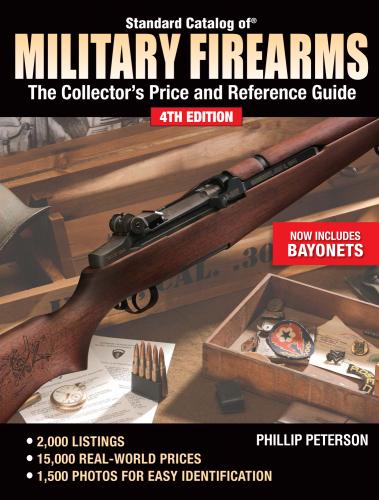A CZ 27 sold at auction for $3,737.50. Chambered for the 7.65mm cartridge and fitted with a 5-inch barrel. Barrel extended for silencer, “fnh” code. German Army acceptance stamps. Condition is 95 percent original finish. Rock Island Auction Company, August 2004
Wartime CZ 27 with Nazi production markings • Courtesy Orvel Reichert
CZ 1938 Nazi-Proofed (P39[t])
Fewer than 1,000 of these pistols were Nazi-proofed late in the war. E/WaA76 acceptance stamp on left frame and barrel.
CZ 1950
This is a blowback-operated, semi-automatic, double action pistol chambered for the 7.65mm cartridge with a 3.75" barrel. Magazine capacity is 8 rounds. Weight is about 23 oz. It is patterned after the Walther Model PP with a few differences. The safety catch is located on the frame instead of the slide; and the triggerguard is not hinged, as on the Walther. It is dismantled by means of a catch on the side of the frame. Although intended to be a military pistol designed by the Kratochvil brothers, it proved to be underpowered and was adopted by the police. There were few released on the commercial market.
CZ 1950 • Courtesy Chuck Karwan
Model 1970
This model was an attempt to correct dependability problems with the Model 50. There is little difference to see externally between the two except for markings and the grip pattern. Markings are “VZOR 70 CAL 7.65.” Production began during the 1960s and ended in 1983.
Courtesy Rock Island Auction Company
CZ 1952
Since the Czechoslovakian army was not happy with the underpowered CZ 1950 pistol, they began using Soviet weapons until 1952, when this model was designed. It was designed for a new cartridge known as the 7.62mm M48. It was similar to the Soviet cartridge but loaded to a higher velocity. This is a single action, semi-automatic pistol with a 4.5" barrel. It has a locked breech that utilizes two roller cams. Magazine capacity is 8 rounds. Many refurbished and original pistols were imported into the U.S. beginning around 2004.
CZ 75
Introduced in 1975. 4.5" barrel. 9mm 15 round magazine. Offered in both commercial and military versions the CZ 75 is used by more than 60 countries around the world in 9mm. Approximately 1,250,000 military pistols are in service. The Czechs use the pistol in their Special Forces units. The CZ-75 was banned from import to the U.S. until 1994 when the U.S. relaxed the ban on imports of firearms from former communist countries. A few early commercial models were imported by law enforcement officers before 1994, thanks to an exception in the import rules. These brought a premium price at the time. Frequently in the 700-800 range. The popularity of the CZ-75 design inspired copies to be made in Switzerland, Italy and Israel. These were imported to the U.S. beginning in the mid 1980’s. To the author’s knowledge, no military issue CZ-75’s have appeared on the U.S. market. Price for current commercial CZ-75B, basic model. Black finish, fixed sights. Many options and finishes are available.
CZ 82/83
This is a fixed-barrel .380 caliber pistol. It features an ambidextrous safety and magazine catch behind the triggerguard. The pistol is stripped by means of a hinged triggerguard. Barrel length is 3.8", overall length is 6.8", and weight is about 23 oz.
The Model 82 designation is the military model, while the Model 83 is the commercial version. The Model 83 is offered in 3 calibers: the 9x18, .380, and 9mm. The military Model 82 is offered in only one caliber, the 9mm Makarov. The Model 82 is the side arm of the Czech army. The Model 82 is no longer in production, but the Model 83 is currently manufactured.
SUBMACHINE GUNS
The Czechs built the CZ 247 and the CZ 47 after World War II, but did not adopt these guns for their own military use. Instead they were exported to South America and other countries. These submachine guns are chambered for the 9mm Parabellum cartridge and are similar in appearance to the CZ 1938 gun but with a 40-round magazine.
CZ 23/25
The Model 23 has a wooden stock while the Model 25 has a folding metal stock; otherwise all other dimensions are the same. Introduced in 1948, this submachine gun is chambered for the 9mm cartridge. Magazine capacity is 25- or 40-round box type. Rate of fire is about 600 rounds per minute. Weight is approximately 8 to 8.5 lbs., depending on model. This gun introduced the hollow bolt that allows for the short length of the gun (17.5" with butt folded, 27" with butt extended) and was copied in the UZI. The magazine well is located in the pistol grip, another feature copied by the UZI. The trigger mechanism is designed so that light pressure gives semi-automatic fire while full trigger pressure gives full automatic fire. Weight of the gun is about 7 lbs. A variation of this model is called the Model 24/26 and is the same except for the caliber: 7.62mm.
NOTE: Prices listed are estimates only.
Courtesy Thomas Nelson, The World’s Submachine Guns, Vol. 1
Pre-1968
| Exc. | V.G. |
|
